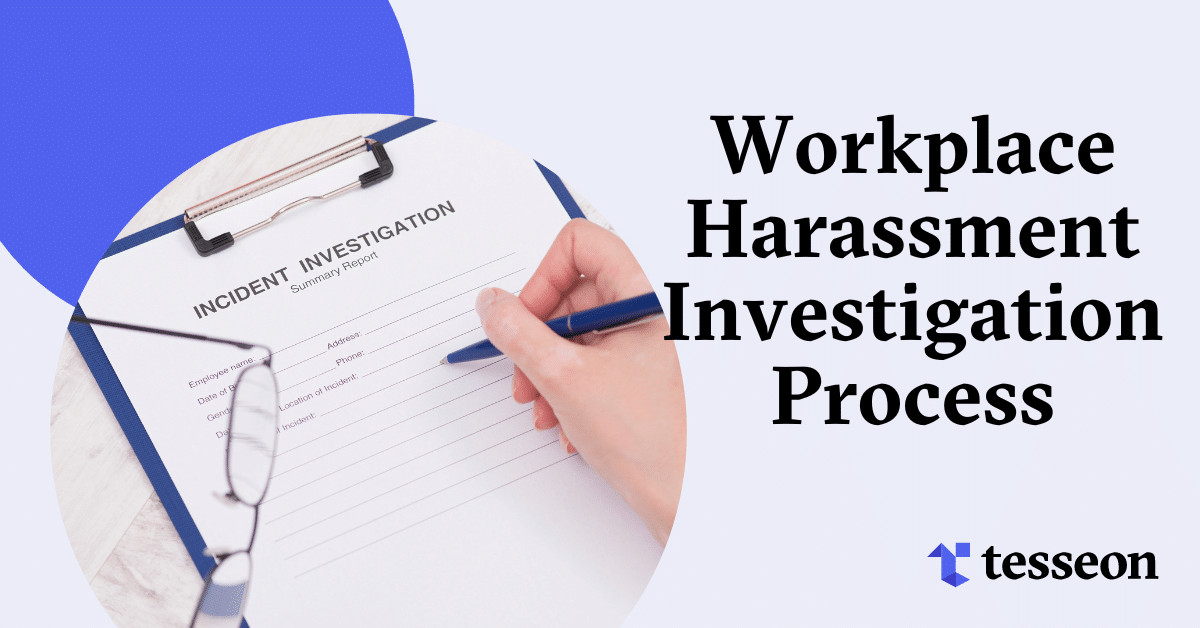Workplace Harassment Investigation Process
July 5, 2024
What is a Workplace Harassment Investigation Process?
A Workplace Harassment Investigation Process is a structured approach that employers implement to address allegations of harassment. This process ensures that complaints are taken seriously, investigated thoroughly, and resolved appropriately. This involves documenting all steps taken, maintaining confidentiality, and ensuring that both parties receive fair treatment throughout the investigation.
How do you investigate harassment in the workplace?
To investigate harassment in the workplace effectively, it is essential to follow a systematic approach:
- Receive the Complaint: Promptly and privately listen to the employee’s complaint. Ensure that the complaint is documented in detail.
- Assess the Allegation: Determine the severity of the situation and the need for immediate interim measures.
- Choose an Investigator: Select a neutral and trained investigator to maintain objectivity and fairness.
- Gather Evidence: Collect all relevant documents, emails, and other records. Interview both the complainant and the alleged harasser, along with any witnesses.
- Document Everything: Keep detailed records of all steps taken, including interviews and gathered evidence.
- Analysis and Findings: Analyze the evidence to determine if the harassment occurred based on company policy and legal definitions.
- Take Appropriate Action: Based on the findings, take corrective actions which may include disciplinary measures, training, or policy revisions.
- Follow Up: Follow up with the complainant to ensure that the issue is resolved and no further harassment occurs.
Why is a workplace harassment investigation process important?
A workplace harassment investigation process is crucial for several reasons:
- Legal Compliance: It helps employers comply with federal and state laws against workplace harassment.
- Creates a Safe Environment: It demonstrates your commitment to providing a safe and respectful workplace.
- Protects the Company: Properly handling complaints can protect your company from potential lawsuits and reputational damage.
- Ensures Fairness: A structured process ensures that all parties receive fair treatment and that decisions are based on objective evidence rather than biases.
What should be included in the Workplace Harassment Investigation Process?
An effective Workplace Harassment Investigation Process should include:
- Clear Policy: A clear and detailed anti-harassment policy that is well-communicated to all employees.
- Training: Regular training for employees and managers on identifying, preventing, and reporting harassment.
- Reporting Mechanism: An accessible and confidential reporting mechanism for employees to report harassment.
- Investigation Procedure: A step-by-step procedure that details how investigations will be conducted, including timelines and documentation requirements.
- Confidentiality: Measures to ensure confidentiality throughout the investigation to protect all parties involved.
- Follow-Up and Support: Procedures to provide support to the complainant and ensure that any retaliatory behavior is prevented.
Protect Your Workplace with a Comprehensive Investigation Process
Having a robust workplace harassment investigation process is crucial for maintaining a respectful and safe work environment. Protect your business and employees by implementing clear policies and thorough investigation procedures.
Download our HR Investigation Template to create or enhance your workplace harassment investigation process.
share this blog
STAY CONNECTED
Sign up for our newsletter for the latest Tesseon information.
Related Blogs
What our clients are saying about us
Disclaimer: The information provided on this blog page is for general informational purposes only and should not be considered as legal advice. It is advisable to seek professional legal counsel before taking any action based on the content of this page. We do not guarantee the accuracy or completeness of the information provided, and we will not be liable for any losses or damages arising from its use. Any reliance on the information provided is solely at your own risk. Consult a qualified attorney for personalized legal advice.

